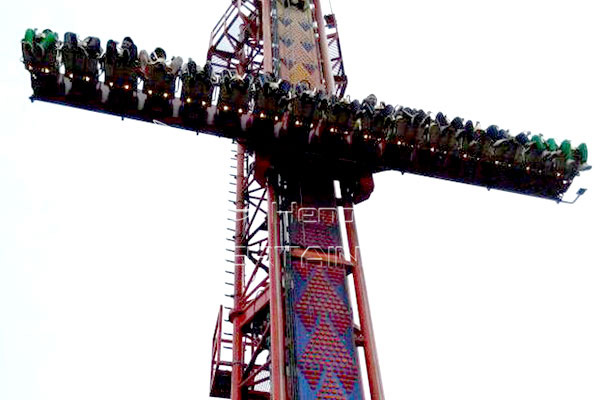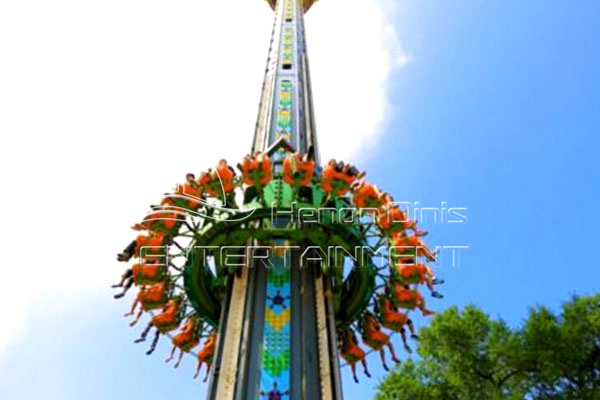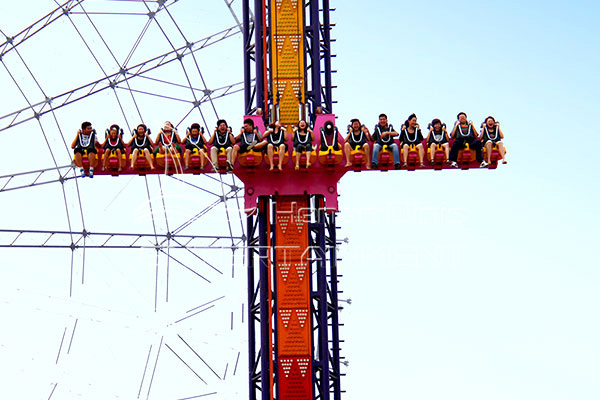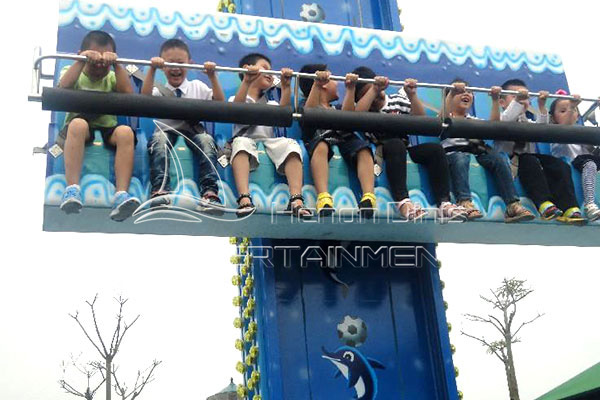The jumping machine is an exciting amusement facility, which mainly consists of a high tower and a lifting platform attached to the tower body. When passengers sit on the platform, the platform will quickly rise to the top of the tower and fall freely at a faster speed, giving passengers instant weightlessness and a super thrilling feeling. But do you know how tall is drop tower ride? Influencing factors include geographical location, target audience, and maintenance and operating costs.
Geographical Location Affects the Height of the Drop Tower Ride
Climatic conditions vary significantly in different geographical locations, such as wind speed, temperature, humidity, and rainfall. In areas with high wind speeds, building jump machines that are too high may pose safety risks, as strong winds may affect the stability and safety of the facility.
Likewise, extreme temperatures and humidity can affect material performance and durability, possibly requiring special materials or designs to accommodate these conditions, impacting cost and design decisions.
Target Audience Influence the Height of the Drop Tower Ride
If the target audience is primarily children or the elderly, safety and comfort considerations will be even more important. A lower height reduces potential risks while also meeting the stimulation needs of these groups.
Different target audiences have different expectations and preferences. Some visitors may prefer mild rides, while others may seek extreme experiences. Therefore, understanding the preferences of your target audience is crucial in determining the height and design of your jumping machine.
Maintenance and Operating Costs
Operating a taller jump machine generally requires more energy, especially if the jump machine contains an elevator or other lifting mechanism, which will result in higher operating costs in the long term. Taller facilities may require specially trained operations and maintenance personnel, which increases labor costs while ensuring safe operations.
Maintenance and safety inspections of tall structures are often more complex and frequent. And may require special equipment and technology, such as aerial work platforms and professional maintenance teams, thereby increasing maintenance costs. Taller structures are subject to greater stresses and fatigue, particularly in extreme weather conditions. Consequently, this can necessitate more frequent inspections and component replacements, thereby further increasing long-term operating costs.
These are 3 factors that affect the how tall is drop tower ride. If you want more information, please contact Dinis.





